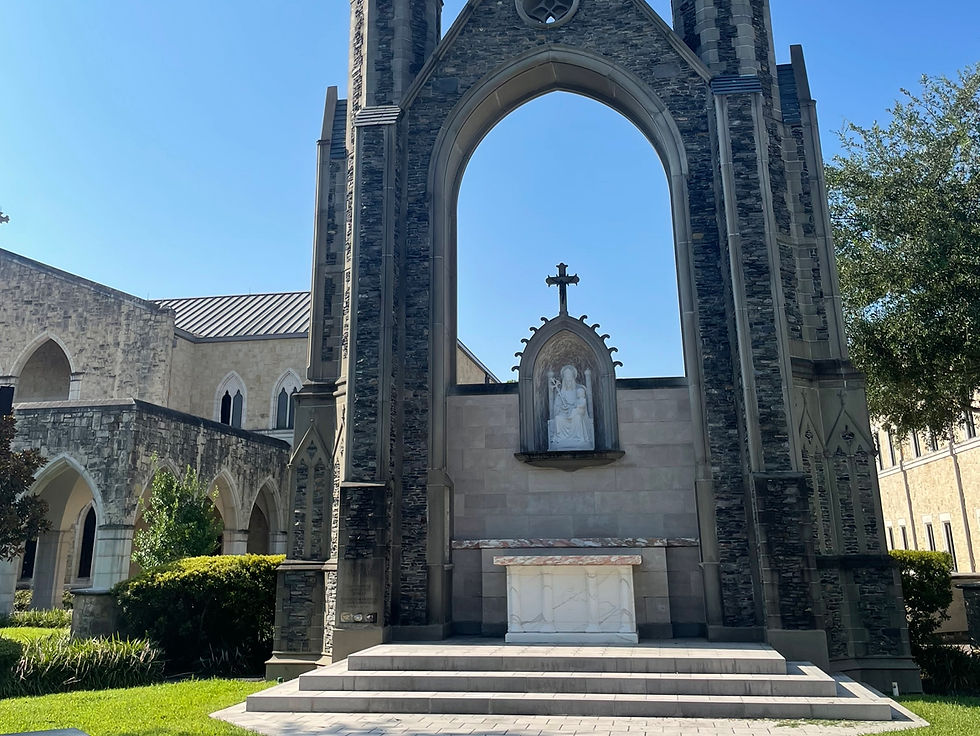Evangelicae Historiae Imagines
- Kelvin Sandigo
- Oct 11, 2022
- 3 min read
One of the beautiful benefits of following the annual liturgical cycle of the Church is that one encounters the same scriptural and extra-scriptural readings year after year. This past Sunday was the 18th Sunday after Pentecost, and whether in the year 1622, 2022 or 4722, the Gospel reading for the 18th Sunday after Pentecost will always be Christ healing the paralytic. It is humbling to recognize that these simple yet miraculous accounts of the actions of Our Lord while He walked the earth will never cease to be food for our soul and those of men of all times and places. Nowadays, the Gospel can be read in the comfort of our homes when we decide to pick up and open the family Douay-Rheims Bible, but that will not stop the Church from instructing her children with the passages they need to hear the most often.

St. Ignatius of Loyola, holy founder of the Society of Jesus, the Jesuits, understood clearly the importance of making the stories of the Gospels intelligible to all people, learned and unlearned, Christian or pagan. That is why asked one of the first brothers of the Order, Jerome Nadal, to design a book that presented episodes of the Gospels with pictures, explanatory texts, and pious meditations. This Spaniard took that suggestion to heart and commenced the work of the Evangelicae Historiae Imagines (or Images of Gospel History). Nadal died in 1580 before seeing the fruits of his labors with the first edition printed in 1593 in Antwerp, Belgium.
The book consists of 153 engravings depicting scenes from the Gospels starting at the Annunciation and progressing to the Coronation of Our Lady, arranged in chronological order. As shown in the image above, this was more than a simple picture book. The top section describes the story recounted in the image with references to where this is found in the Missal and Bible. The middle section consists of a three-dimensional woodcut (innovative for its time, and eventually inspirational to future artists like Gustave Doré) with letter labels sprinkled throughout. The bottom section provides brief descriptions of the labeled elements in Latin, the mother tongue of the universal Church. With the vast quantity of images, the Gospels of all Sundays and major feasts of the liturgical year, along with a number of weekdays in Lent, are covered.
Missionaries would take copies with them on their travels for personal meditation and as well as to educate the peoples they would preach to. In an inadvertent way, that is how I came across this book. In searching for colonial art I stumbled across a website appropriately titled ColonialArt.org. It should not come to any surprise that the Evangelicae Historiae Imagines served as an authoritative model for indigenous artists in the Spanish Empire. I first saw a collection titled Song Nianzhu Guicheng (Method of Reciting the Rosary) adapted from this book, and with more digging I found collections which contained more Gospel images, like Tianzhu Jiangsheng Chuxiang Jingjie (Illustrated Explanations of the Lord of Heaven's Incarnation).

The Internet can sometimes be a repository for good, and in this case has helped salvage Evangelicae Historiae Imagines from falling into total obscurity. A good place to start is seeing the complete collection, and a good quality scan can be found here. I understand that in our modern time it can be challenging to make heads or tails of the Latin titles, so this webpage is a great tool for decoding and organizing the pages liturgically. I hope this brief presentation has piqued enough interest to encourage further research. I leave you with my favorite image, from the Triduum, What Christ does in Descending to Hell.
A. The soul of Christ will never die, He goes to the Limbo of the Patriarchs
B. The souls of all the holy Patriarchs offer veneration to the soul of Jesus
C. The soul of the thief, shortly after dying, is taken by an angel to Limbo
D. In Limbo the infants shall never want for joy
E. In Purgatory multitudes of souls were liberated, signified by the rays of light shooting towards the Limbo of the Patriarchs
F. In the depths of hell Lucifer is with his own, wherein Judas himself heavily rages

Sic transit gloria mundi,
Kelvin Sandigo



Comments